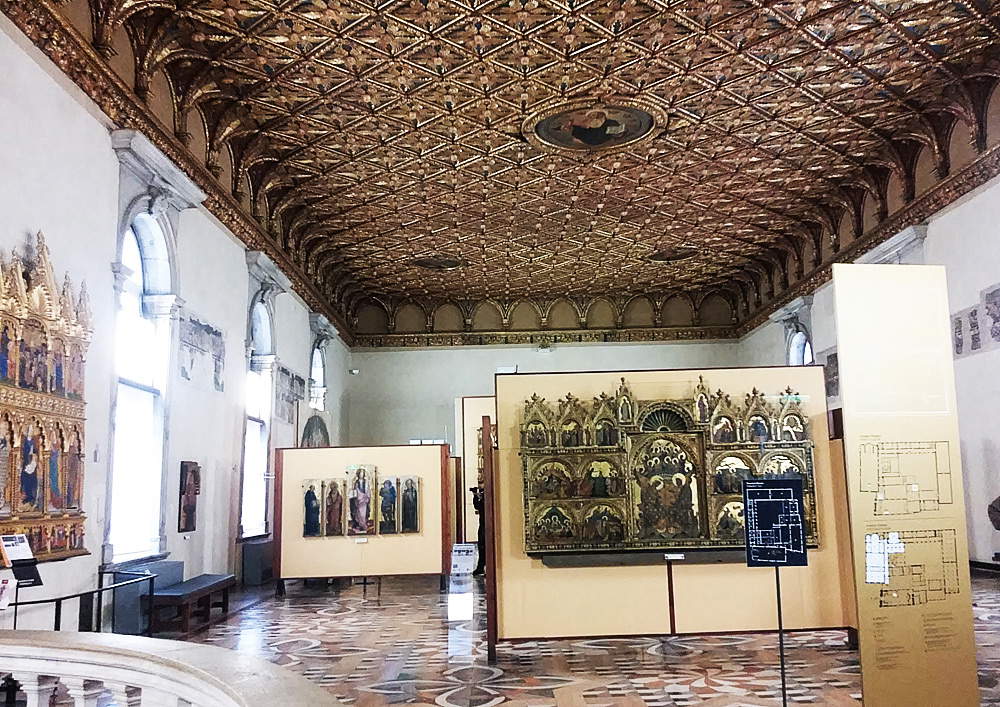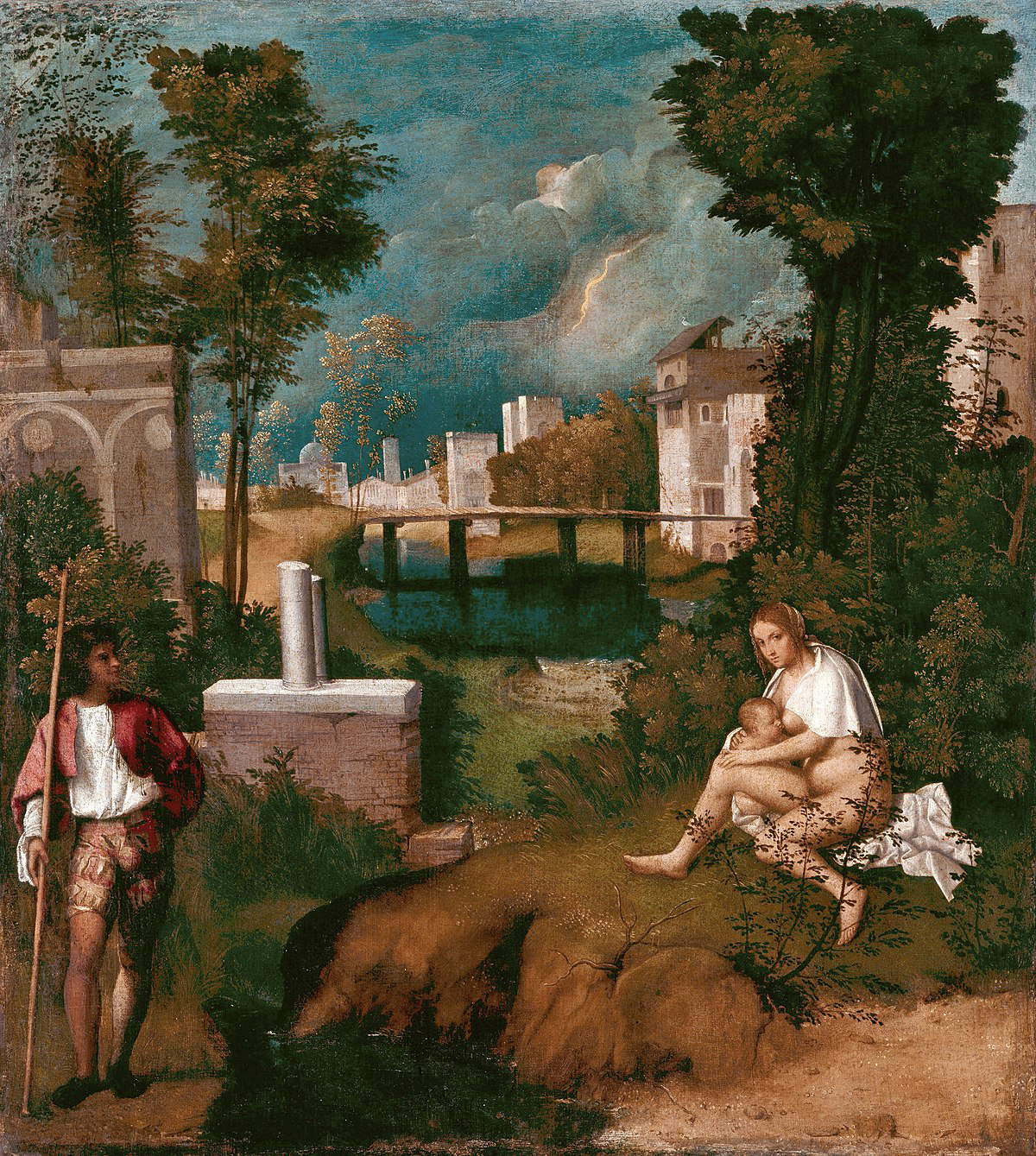In a letter sent this morning to her contacts, Paola Marini, director of the Gallerie dell’Accademia in Venice, bid farewell to the museum, its board of directors, the scientific committee, colleagues, collaborators and, of course, the public: Marini will have to relinquish the directorship of the Venetian institute tomorrow, October 31, due to age limit, thus leaving the post vacant, moreover at a time when the museum is in great need of a guide. In fact, there is still the transfer of the storerooms of the former church of San Gregorio (which will house the new Museum of Oriental Art) to the new location of the Church of the Cross at Giudecca, there are the new exhibitions to be organized (only yesterday a determination was published indicating the procedure to identify a cultural operator to whom the co-production of the great exhibition on Leonardo da Vinci scheduled from April 19 to July 14, 2019 will be entrusted), there are the renewals for the bookshop and the ticket office and that for the cafeteria. And there is, above all, the question of the refurbishment of the second floor of the museum, which can only be completed when the building that houses the Galleries (the large monumental complex of Santa Maria della Carità) is totally restored: the situation, in short, is complicated, and no short time is expected for the appointment of the new director.
In the meantime, it is possible to take stock of Paola Marini’s directorship, which can only be positive, for several reasons. The director, in her farewell letter, writes that in the past three years the museum has re-established “deep ties with the city community” and relaunched “its international role as a beacon of Venetian painting.” It is hard to blame the Veronese art historian, who before moving to the Gallerie dell’Accademia came from a long experience in her hometown, having been director of the Civic Museums of Verona (an experience in the context of which, moreover, she had to deal with the dramatic affair of the theft of the Museo di Castelvecchio): just as in Verona museums were and are institutions that are very much felt by the citizens, the same can now be said of the institution in the Venetian capital. Many initiatives have been undertaken to bring Venetians closer to their museum: consider, in particular, the exhibitions, almost all of them focused on local heritage and organized around the masterpieces of the collection.
On the chapter of major exhibitions, the exhibition dedicated to Aldo Manuzio(Aldo Manuzio. The Renaissance of Venice), the monographic exhibition on Michele Giambono, which brought together fourteen of his paintings in the city (admittedly small in number of works, but large in importance) and the sumptuous bicentennial exhibition(Canova, Hayez, Cicognara. TheLast Glory of Venice), which brought back to Venice most of the works created at the beginning of the nineteenth century for the so-called “Homage of the Venetian Provinces,” and which was above all able to set up a profound reflection on the importance of the coexistence of ancient and contemporary art for the formation of the civic sense of the citizenship called to visit the museum: and perhaps it is also because mindful of this message that the Galleries, next year, will welcome their first exhibition with a great living artist as the protagonist, a solo show by Georg Baselitz. Then it is impossible not to mention the great exhibition on the young Tintoretto, running until next January 6 and also capable of arousing a prolonged international echo, not only because it is centered on an artist with a high-sounding name, but because it is an original and far-reaching exhibition that has attracted works from halfway around the world in order to delve into the formation of the great sixteenth-century artist. In addition, the Gallerie dell’Accademia has initiated a lively schedule of more focused events, small “focus” events similar to the Dialogues at the Pinacoteca di Brera (and, moreover, the Galleries have actively collaborated with Brera in organizing exhibitions) or the Raccontami una storia (dell’arte) at the Palazzo Reale in Genoa, aimed mainly at presenting new acquisitions to the public.
 |
| Paola Marini |
 |
| The first room of the Gallerie dell’Accademia, in the ancient chapter house of the Scuola Grande della Carità |
 |
| Giorgione’s The Tempest, perhaps the Accademia Galleries’ most famous masterpiece |
Over the past three years, in fact, the holdings of the Accademia Galleries have been enriched with works of exceptional quality that have consistently enriched the heritage associated with the city. A Parable of the Wedding Guest by Bernardo Strozzi has arrived, a Self-Portrait in the Form of Amazement by Pietro Bellotti has arrived, eighteen preparatory studies for Francesco Hayez’s Destruction of the Temple of Jerusalem have arrived, and above all, Giorgio Vasari’s Hope has arrived, exceptional evidence of the Arezzo artist’s stay in Venice, and a work that was once part of the ceiling of Palazzo Corner Spinelli, dismembered in the eighteenth century and then dispersed: the painting was able to rejoin the others from the same cycle already in the collection by completing the reconstruction of the ceiling, which the museum had been trying to finish for years. Another chapter of primary importance is that of the new rooms (a project, however, begun with merit by the previous director, Giulio Manieri Elia, who remained in the Galleries in the role of curator of the collections): those in the Palladian Wing were opened in January 2016, seven rooms that were added to the five already opened in 2015 and that enriched the itinerary dedicated to Venetian art of the eighteenth and nineteenth centuries by guaranteeing a modern and engaging setting for several masterpieces of undisputed value, such as Hayez’s own Destruction of the Temple of Jerusalem, whose drawings were purchased. It should be emphasized that these achievements were also possible thanks to the support of private individuals, and in the fruitful relationship between public and private the Gallerie dell’Accademia represents one of the spearheads of the entire country: associations such as Venetian Heritage, Venice in Peril Fund, Save Venice or Venice Foundation have actively collaborated with the museum by offering important support for restorations, rearrangements and acquisitions, and by involving companies (among the virtuous examples one could mention the restorations of the Veronese paintings supported by Venetian Heritage and Bulgari, or the purchase of Giorgio Vasari’s Hope itself, which was also possible thanks to the collaboration of Venetian Heritage and Venice in Peril Fund). The Gallerie dell’Accademia, from this point of view, thus represents a model to be enhanced and imitated.
On the visitor numbers front, the Galleries have seen a marked increase in visitors compared to the period of the most conspicuous declines (2014-2015), registering 316,995 visitors in 2017, compared to 311,645 in 2016, 286,821 in 2015, and 272,191 in 2014. Of course, we are still a long way from the early 2000s, when the Galleries marked nearly four hundred thousand visitors (the record was in 2004, when 383,361 visitors entered the museum), so much so that increasing visitors is one of the main goals set for the Galleries by the Ministry of Cultural Heritage, but it is likely that the numbers will increase considerably (part of the increases will be due to the large exhibitions currently underway and in the pipeline). But Paola Marini’s management has nonetheless sealed a record, that of the takings, which in 2017, for the first time since Mibac has been collecting statistics for museums, exceeded two million euros: last year 2,293,146 euros entered the Galleries’ coffers, compared to 1,390,473 in 2016 and 1,960,487 in the previous record, reached in 2008. Numbers that put the Galleries in 23rd place among the most visited Italian state museums. Broadening the spectrum of the analysis, the Gallerie dell’Accademia would rank on the podium of the most visited museums in Venice: apart from the Doge’s Palace, which enjoys a favorable position (and scores more than a million visitors each year), the Galleries have similar numbers to the Correr Museum, where 337,648 visitors came in 2016. Still speaking of visitors, a brief note on evening openings is necessary: this is a tool that the Galleries have often used, but it would need the ministry to take action to incentivize it and make it structural on all museums.
The Galleries to date are still an open building site: it was said at the beginning of this article that the museum’s priorities are, but the fact remains that the main problem, which Paola Marini has also pointed out on several occasions, is the chronic lack of personnel (especially administrative staff as well as reception staff), which in an interview with the Gazzettino last year the director estimated at 45% of the total number of staff that would allow the Galleries to function as effectively as possible. This is a problem that, as has been repeatedly denounced in the pages of this newspaper, concerns the entire Italian system of cultural heritage, and against which museum directors can do little (and so far there does not seem to be, if we overlook the announcements, a serious will to solve it). Beyond the problems, which, it has to be noted, are bigger than the museum, one hopes that Paola Marini’s successor will be able to follow in the groove traced in recent years: after all, it is not a gamble to believe that our museums need figures like Paola Marini, that is, technicians (art historians for art museums, archaeologists for archaeology museums, and so on: it seems pleonastic to specify this, but given certain policy statements, perhaps it is never superfluous to reiterate it), who are, however, animated by a solid and sound managerial vision, along the lines of what happens in the great foreign museums.
Warning: the translation into English of the original Italian article was created using automatic tools. We undertake to review all articles, but we do not guarantee the total absence of inaccuracies in the translation due to the program. You can find the original by clicking on the ITA button. If you find any mistake,please contact us.